The 2023-2024 school year is a challenging year for students preparing for the Ontario Secondary School Literacy Test, also known as the OSSLT. Over the past few years, Ontario secondary students have faced many disruptions in learning. The Ontario government launched its Plan to Catch Up in July of 2022 to address the learning gaps caused by the COVID-19 pandemic. For secondary language teachers, these gaps serve as an obstacle as we continue with the return of standardized testing. This blog post shares practical and engaging strategies to help students prepare for the OSSLT.
Is your department or school board interested in licensing OSSLT Prep curriculum? Explore how you can provide these valuable resources to your students by clicking here.
What is the Ontario Secondary School Literacy Test (OSSLT)?
The Ontario Secondary School Literacy Test (OSSLT) is a compulsory standardized test that all secondary students in Ontario must write. The test evaluates English language skills in the areas of reading and writing. These are skills that reflect the Ontario English curriculum for up to and including Grade 9.
Ontario students are required to pass the OSSLT in order to graduate from high school in Ontario; however, there are several supports in place for students who don’t pass. These supports can help them succeed in meeting the province’s literacy requirements.
Is the OSSLT only for Grade 10?
The OSSLT is typically administered to students in Grade 10. This is because the OSSLT evaluates skills that are taught in the Ontario English curriculum from K-9. In 2022, several students in Grade 11 were also eligible to write the OSSLT exam. This was because of cancellations during the COVID-19 pandemic.
The OSSLT can also be written by any student who has already completed the exam but was not successful in achieving a passing grade. Students have unlimited attempts at the OSSLT; however, if students are unsuccessful, there are other options available.
What can students do to prepare for the Ontario Literacy Test?
In theory, all students begin preparing for the OSSLT from the time they start school. This is because the OSSLT is designed to assess the skills taught in the Ontario English curriculum from kindergarten to Grade 9.
In reality, not all students are equipped with the necessary skills to be successful. This is especially true for English Language Learners who have not been enrolled in Ontario schools for a portion of their lives. ELL students may require more experience with the Ontario curriculum in order to be successful on the OSSLT. Fortunately, your ELL students can access special accommodations. Click here to learn more about ELL participation in the OSSLT.
Oftentimes, native English-speaking students also benefit from extra preparation for the OSSLT. Teachers may begin to prepare for the OSSLT well before the exam date in Grade 10 – this preparation is especially vigorous in the 9th and 10th grades. Through various reading and writing activities, teachers can “teach to the test” in order to help students prepare for the OSSLT.
Additionally, students can practice for the OSSLT independently or with a tutor. These practice tests include articles, multiple-choice questions, and written response prompts that resemble the mandated tasks for the OSSLT. Students are also encouraged to work on the practice exercises in the OSSLT section on the Education Quality and Accountability Office (EQAO) website.
How to prepare for the OSSLT
1. Review the skills assessed on the Ontario Secondary School Literacy Test
The OSSLT requires a set of prescribed skills for successful completion. Focussing on the following areas will help students prepare for the OSSLT:
- Expressing and developing an opinion
- Writing a series of paragraphs
- Identifying main ideas and supporting points within a text
- Using main ideas and supporting points to support an opinion
- Writing introductions and conclusions
- Interpreting different types of narrative texts (ie. news reports, magazine stories, short fiction)
- Interpreting informational texts (ie. opinion pieces, textbooks)
- Summarizing ideas and information that are explicitly stated
- Understanding ideas and information that are implicitly stated
- Identifying bias, purpose, reliability, and audience
If you are an administrator or department head in an Ontario secondary school, you can consider arranging prep sessions during lunch hour or after school. Students can drop in and work on a streamlined curriculum that is designed to prepare them for the Ontario Literacy Test.
2. Prepare using OSSLT Practice Tests
Another great way to help students prepare for the OSSLT is to utilize OSSLT Practice Tests. These practice tests are designed to resemble the articles and reading questions that students will encounter on the EQAO Ontario Literacy Test. Students will explore a Real-Life Narrative (RNL), two Information Paragraphs (IP), a News Report (NR), and a Dialogue (DI). Additionally, students will complete two Written Multiple-Select activities (WMM) and respond to an opinion essay prompt.
3. Teaching to the Test: Multiple-Choice Questions
The multiple-choice section of the OSSLT is geared towards assessing a number of literacy skills. The questions include everything from identifying the purpose of a text to evaluating the context of a word in order to select an appropriate synonym. There is no way of predicting multiple-choice questions. This means you can’t guarantee your students will be successful with this portion of the test.
Fortunately, there are a number of strategies that you can use to practice for the multiple-choice section of the OSSLT. The most straightforward strategy involves practicing with reading passages and multiple-choice questions that resemble the EQAO test. Students can practice multiple-choice questions using these news reports, information texts, and real-life narratives. These articles and multiple-select questions resemble those that students will encounter on the OSSLT.
Another strategy is to incorporate practice for the multiple-choice section into your everyday lessons. When you read a text together as a class, you can pause to ask questions similar to those on the OSSLT:
- Request that students explain how they interpret new vocabulary so that they can model this process to their peers.
- Ask students questions that prompt them to summarize the text.
- Challenge students to make predictions or inferences about the text.
- Move through the text paragraph-by-paragraph to identify the purpose of certain sentences or sections.
- Encourage students to evaluate the text as a whole by suggesting a title for the selection.
3. Lesson Plans to Practice for the Ontario Literacy Test
There are a number of engaging lessons and project-based assessments that you can use to practice for the OSSLT. You can start with a mandated task and utilize backward design to work on the skills necessary for students to be successful on the OSSLT.
One major assessment in the OSSLT involves reading real-life narratives. This narrative unit includes everything you need to build foundational literacy skills for real-life narratives. Students can demonstrate these skills by completing the Community Interview Project, a project-based assessment inspired by the iconic Humans of New York. They can also apply these skills to post-secondary pathways by practicing writing cover letters.
Another major assessment on the Ontario Literacy Test involves writing an opinion essay. This essay must express an opinion and use different forms of evidence to support the main idea of each body paragraph. This main idea and supporting details mini-unit teaches students how to develop main ideas. Students can also apply this knowledge to peer-based learning activities like a Lincoln-Douglas Debate.
This nonfiction writing bundle also builds the skills necessary to interpret an informational text. Students will learn to identify informational texts and differentiate them from other forms of writing. This will prepare them to write their own informational paragraphs.
Finally, focussing on reading comprehension will also sharpen essential literacy skills for Ontario students. The more practice students have with different types of texts, the more prepared they will be to interpret these texts on the Ontario Literacy Test. This reading comprehension unit focuses on making inferences, making predictions, and summarizing several different forms of texts.
What if you fail the OSSLT?
If a student fails the OSSLT, there are a few options. For one, students can attempt to write the Ontario Literacy Test again. If the student has an IEP, they are also entitled to the accommodations listed on their file. Be sure to review this to ensure that accommodations are met for their second attempt.
Another option is to complete the Ontario Secondary School Literacy Course, also known as the OSSLC or OLC. This course assesses the same skills evaluated on the EQAO exam, meaning that if students pass the course, they meet the requirements to graduate high school.
The Ontario Literacy Course includes mandated tasks that are outlined in the Ontario Curriculum. Students can complete assignments and activities that align with these mandated tasks in order to develop a literacy portfolio.
Becoming successful on the OSSLT
In conclusion, preparing for the OSSLT is a journey that begins early in a student’s educational career and requires ongoing effort and support. By focusing on the key skills assessed, utilizing practice tests, and engaging in targeted learning activities, students can build the confidence and competence needed to succeed on the OSSLT. Remember – success on this test is not just about passing; it’s about demonstrating the literacy skills that are essential for future academic and career success. Encourage students to embrace the challenge, seek support when needed, and approach the OSSLT with a positive attitude.
If you are looking for more information to pass on to an administrator for school purchase orders, click here to learn more.
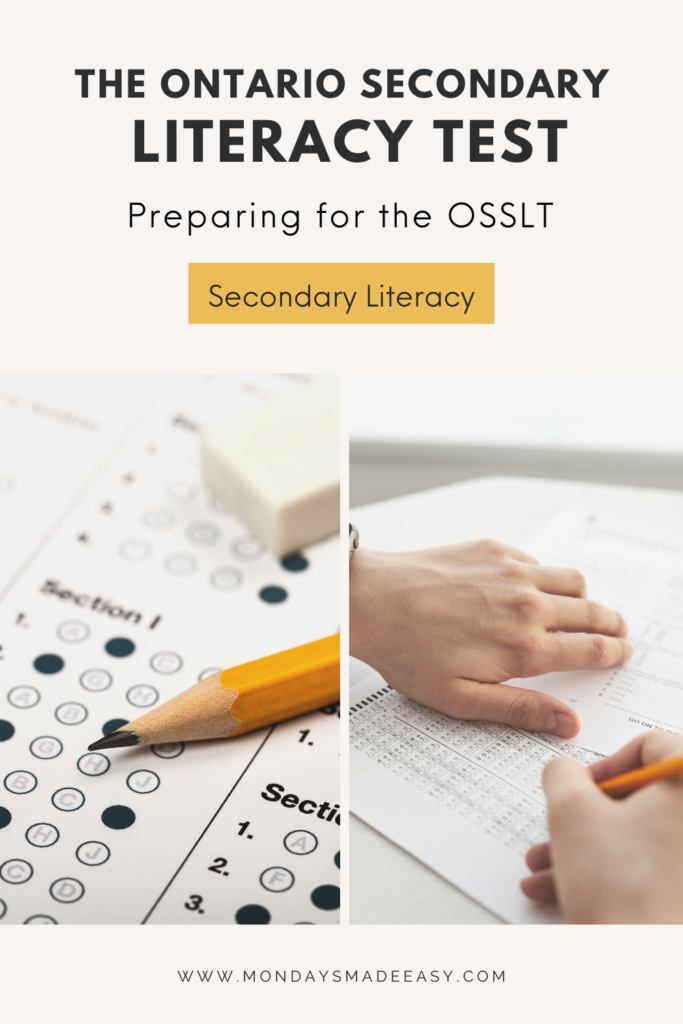
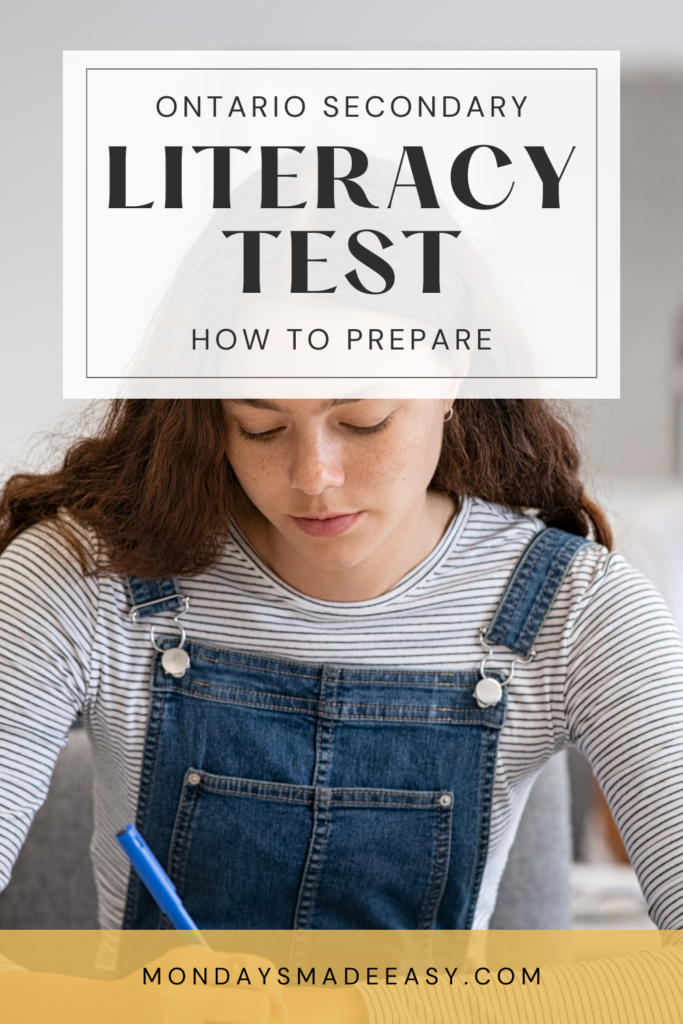
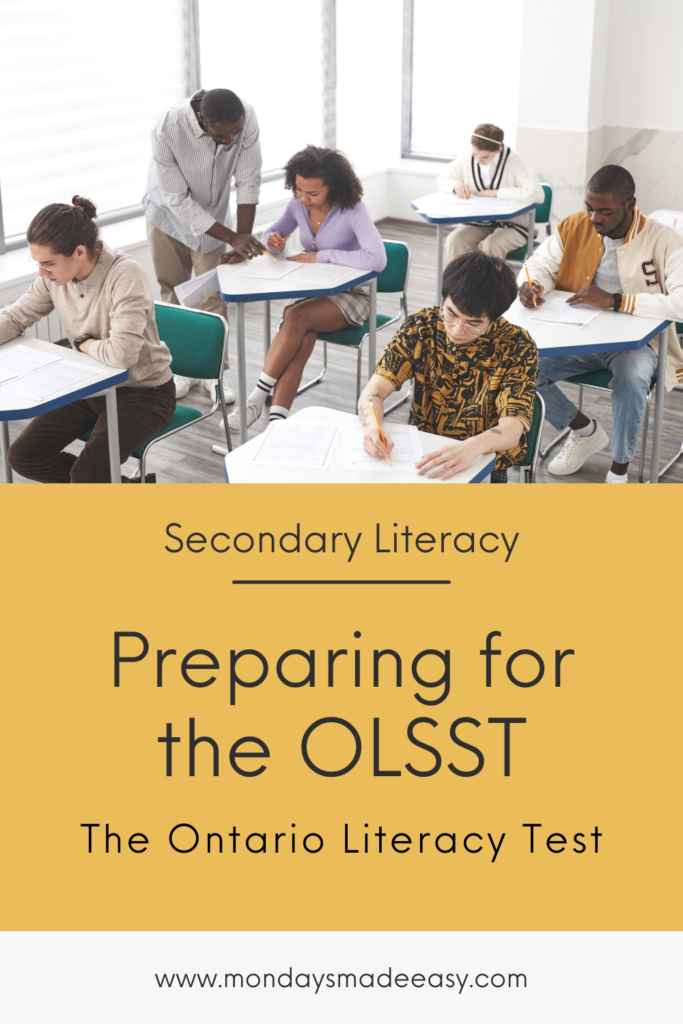
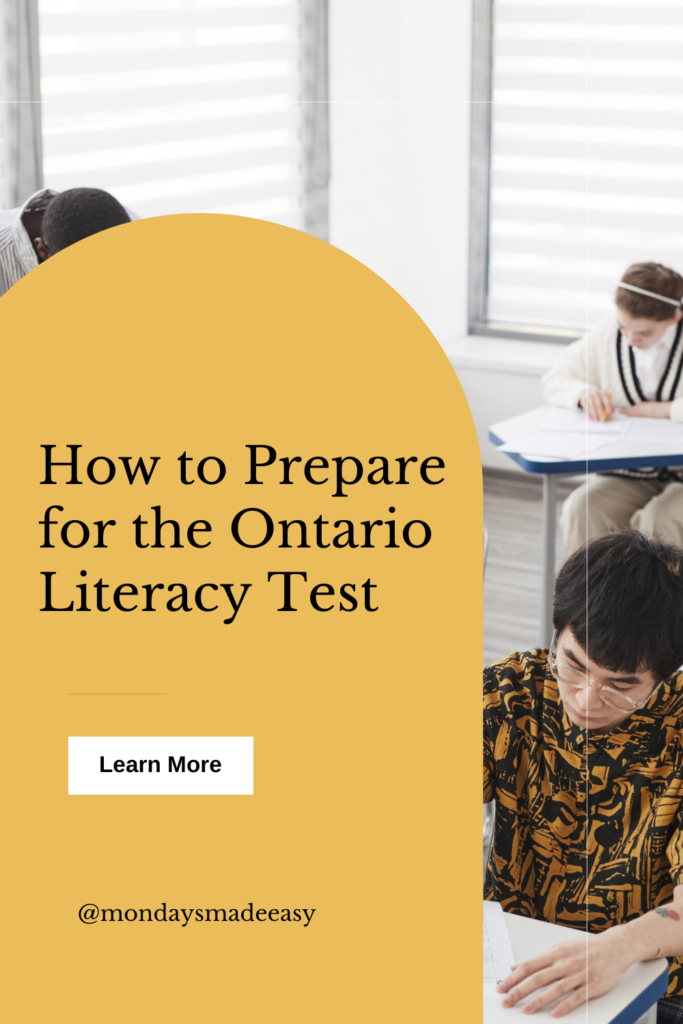
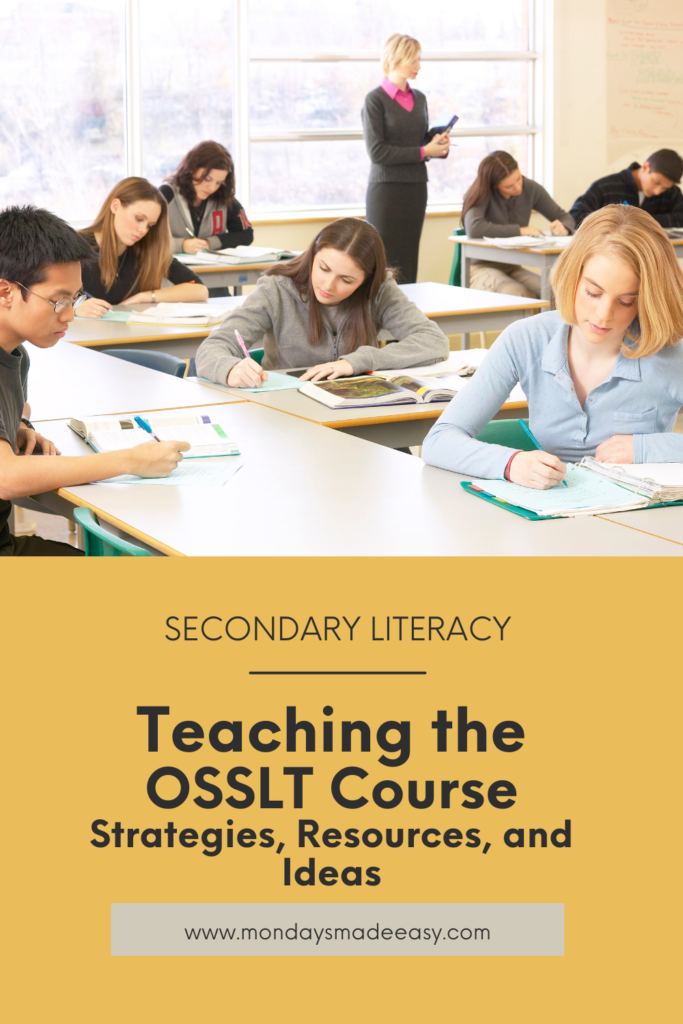
[…] paraphrasing and summarizing is essential for students writing standardized tests, including the Ontario Secondary School Literacy Test (OSSLT), the AP Language and Composition Exam, and both the SAT and the […]